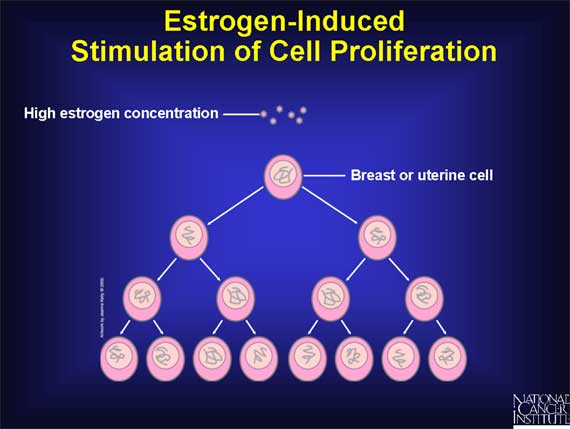|
In some target tissues, the main effect of estrogen is to cause cells to grow
and divide, a process called cell proliferation.
In breast tissue, for example, estrogen triggers the proliferation of cells
lining the milk glands, thereby preparing the breast to produce milk if the
woman should become pregnant.
Estrogen also promotes proliferation of the cells that form the inner lining,
or endometrium, of the uterus, thereby preparing the uterus for possible
implantation of an embryo. During a normal menstrual cycle, estrogen levels
fall dramatically at the end of each cycle if pregnancy does not occur. As a
result, the endometrium disintegrates and is shed from the uterus and vagina in
a bleeding process called menstruation.

< Previous | Index | Next Slide > |